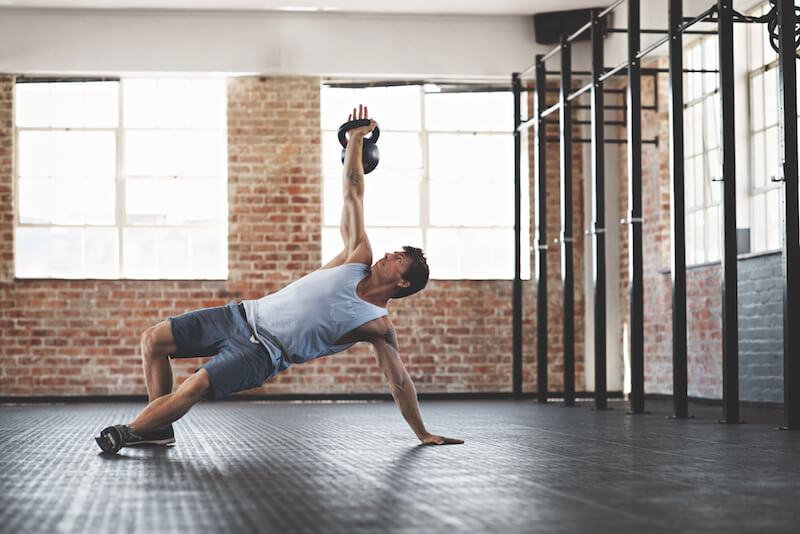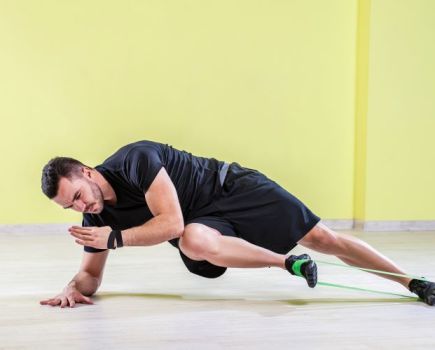A smart and adaptable approach to strength training can keep you young in both body and mind, writes wellness coach Diego Carrete.

In your 20s, think of exercises involving big muscle chains and moves that will recruit a large amount of muscle fibres | Photography: Getty Images
How To Strength Train In Your 20s
Focus on weight training to develop bone density and muscle mass. Perform maximum stimulation exercises and compound movements to take advantage of muscle growth and peak hormonal response. Your body will recover fast, so high frequency can be implemented, although you still need at least one day’s rest a week.
You can experiment with high-frequency techniques and with different high-volume protocols. That said, cardio is still key, for both weight management and protecting your heart later in life.
Think of exercises involving big muscle chains and moves that will recruit a large amount of muscle fibres: squats, deadlifts, standing shoulder press, for example. The more muscles you recruit to perform an exercise, the better.
A popular split routine for experienced gym-goers is push, pull, legs, twice a week (so six days total training), with one rest day on day four:
Monday: Push (chest, shoulders, triceps)
Tuesday: Pull (back, biceps)
Wednesday: Legs
Thursday: Rest
Friday: Push (chest, shoulders, triceps – with different exercises/hitting different angles)
Saturday: Pull (back, biceps – different exercises)
Sunday: Legs (different exercises)
Make sure you warm up properly before the main compound lifts, and dedicate 70 per cent of your training to those. At the end of the session, you can focus on smaller muscle groups, or perform isolation exercises related to the muscle groups you’ve worked on.

In your 30s, put special focus on body posture, muscle symmetry and a balanced physique
How To Strength Train In Your 30s
Focus on progressive overload training – the gradual increase of stress placed on the body through slightly more reps and sets, or less rest, each week – and put special focus on developing healthy, sustainable habits: body posture, muscle symmetry and a balanced physique that will last as you age.
Poor technique or bad habits in your thirties can lead to compensation issues in the future. Improving your physical condition, so your body performs better and fatigues less in the long run, should be prioritised.
Improving your abilities to keep moving, lifting and carrying objects will make it easier for you to preserve muscle mass – something you should definitely look into, because it decreases as we age (somewhere around three to five per cent per decade).
How To Perfect Your Posture:
Pull: most of us are anterior (front) dominant, so pay particular attention to pull exercises to keep the ‘hunch’ at bay.
Stretch: particularly the pectorals, to prevent inward rotation.
Rise: walk tall and lift your sternum, and sit up straight at your desk.
Form: maintain perfect technique in every rep of every exercise.
Core: a strong midsection is fundamental to good posture.

In your 40s, increase time under tension to maximise muscle activation
How To Strength Train In Your 40s
In your forties, increase time under tension to reduce joint stress and create greater muscle-building stimulus. This is the age to shift to tempo, rather than weight (lighter and slower, over heavy and quick).
I recommend transitioning into pull-dominant routines to fight anterior rotation caused by age and lifestyle, and work on the inner back (narrow-grip rows, for example).
Work with lighter loads and focus on time under tension, because when we load bigger weights, the big muscles take over, leaving the muscles we really want to work with little chance of stimulation. And to maintain muscle mass, use the progressive overload principle to fight age-related adaptations.
3 Ways To Increase Time Under Tension:
- Make every set last at least 40 seconds.
- Avoid ‘locking out’ at the top of reps to keep your muscles engaged.
- Stick to a tempo of 3:3. That means three seconds in the positive phase of the movement and three seconds in the negative.








